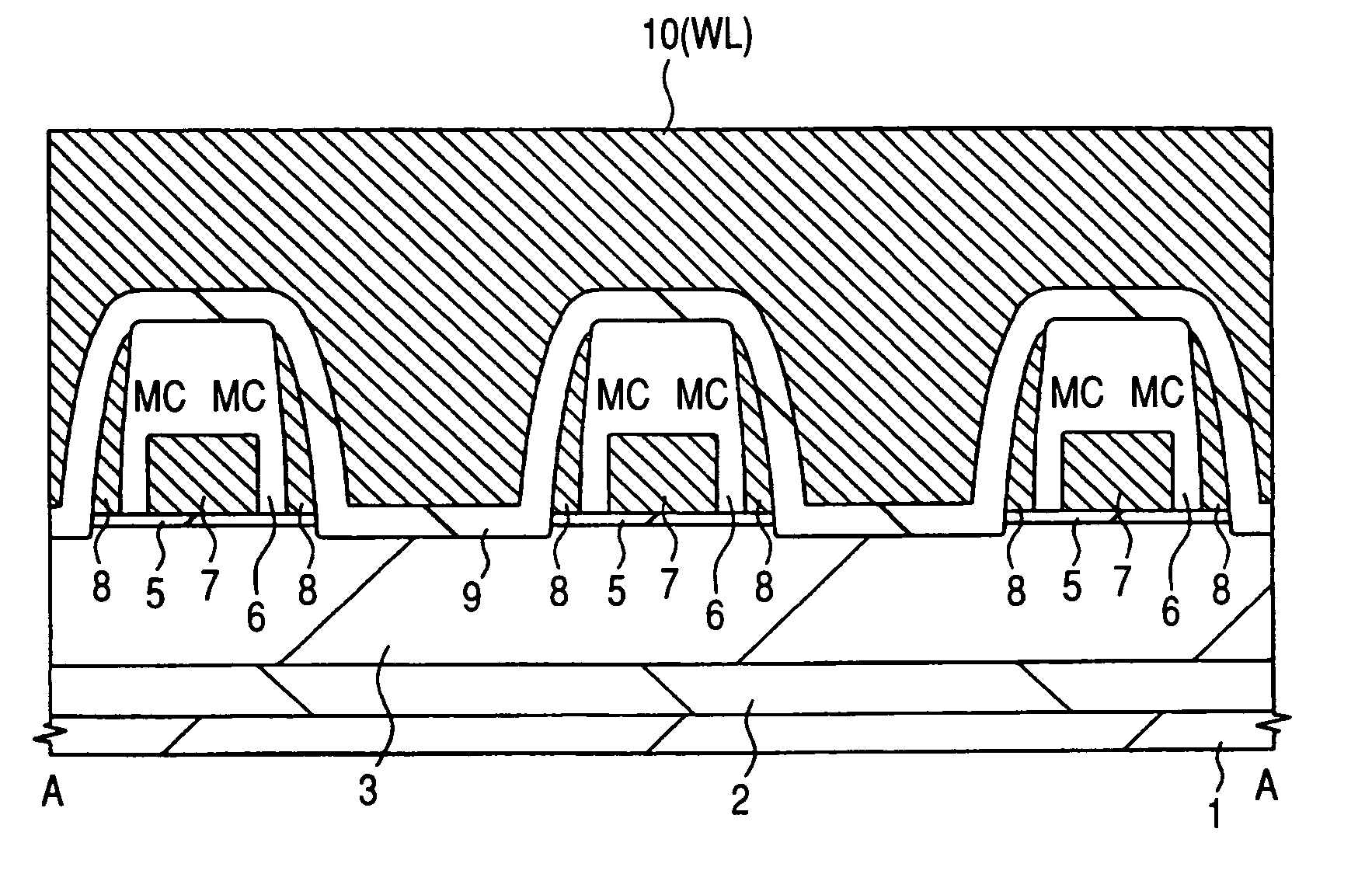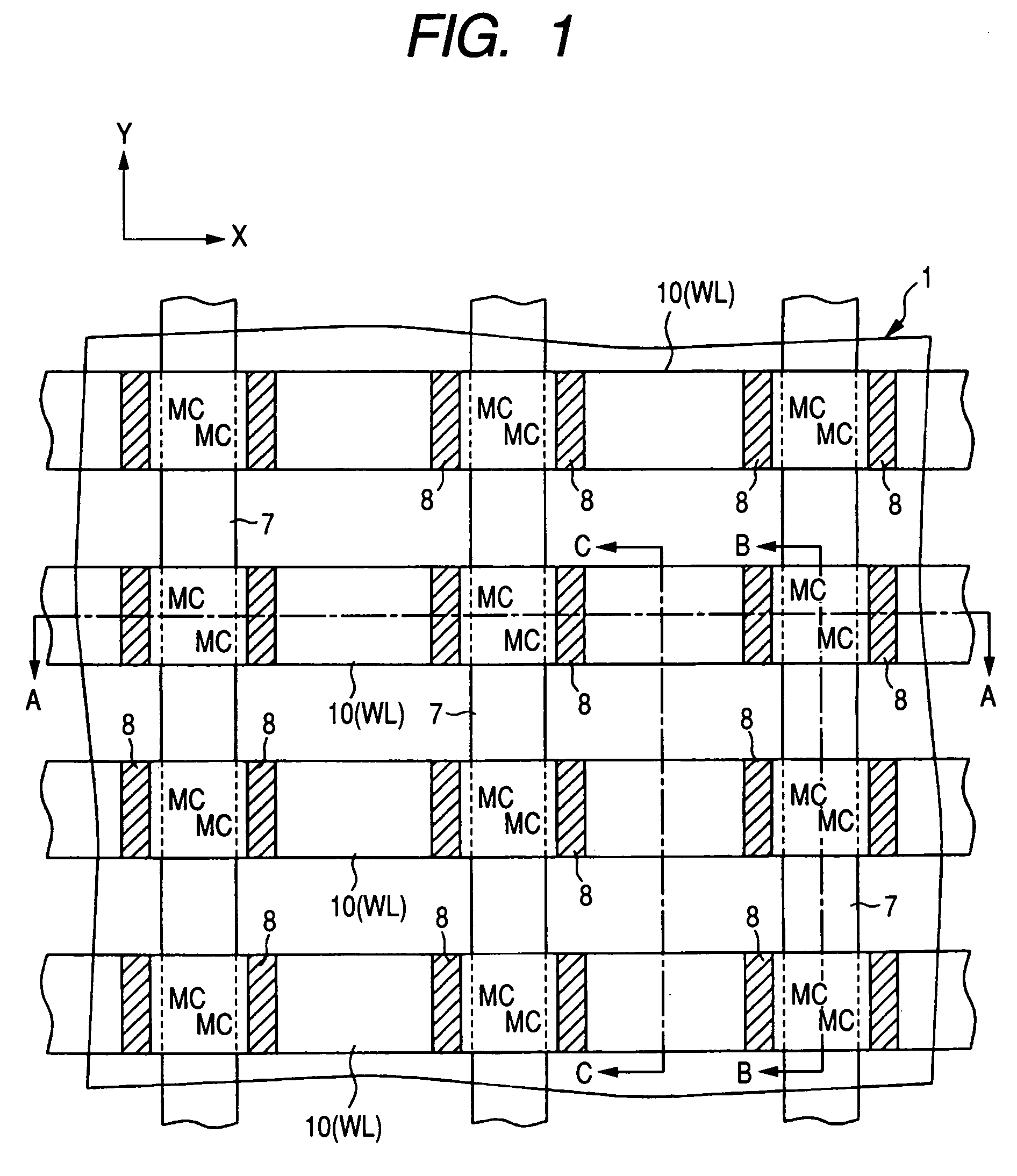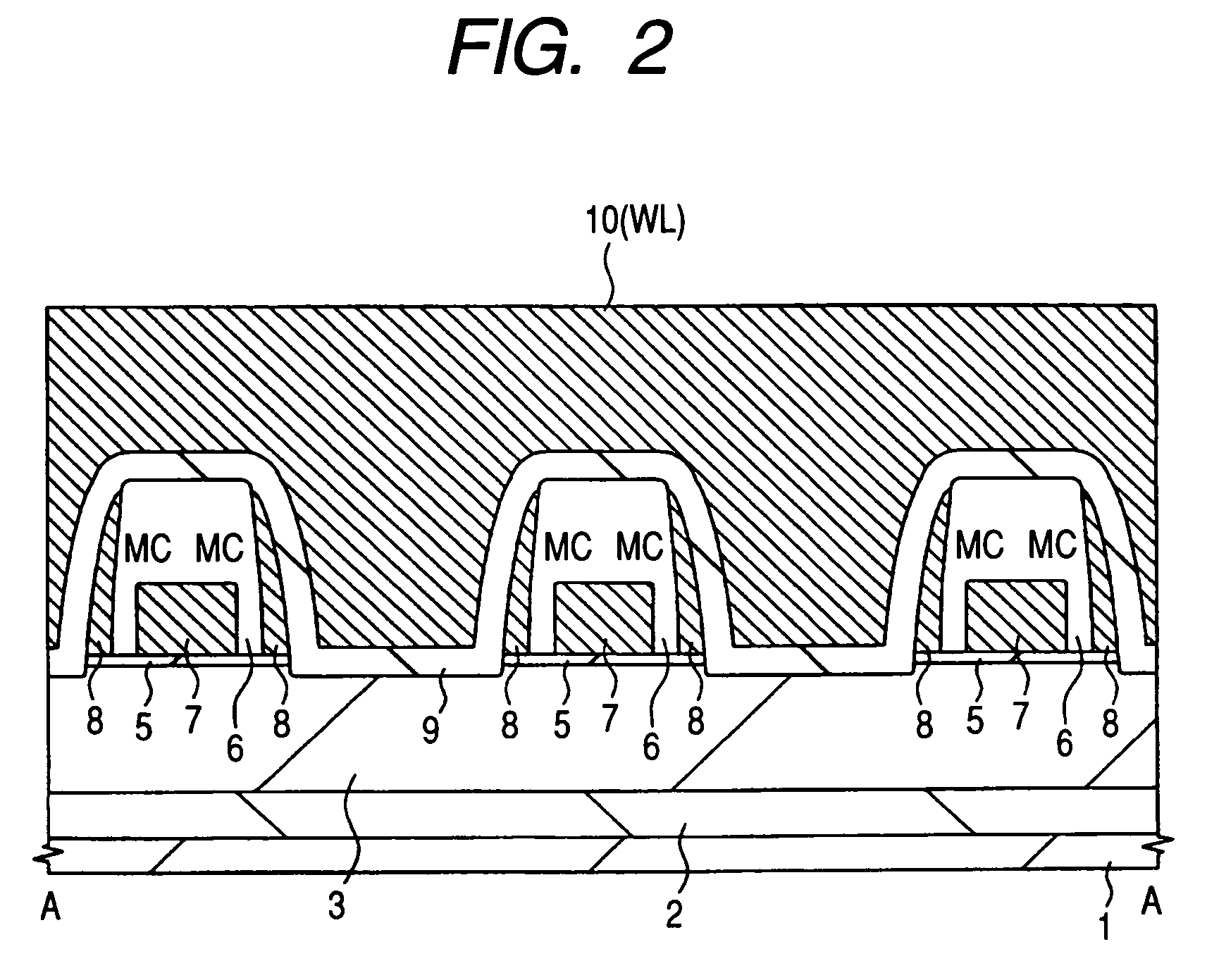Nonvolatile semiconductor memory device and a method of the same
a nonvolatile semiconductor and memory device technology, applied in the direction of digital storage, solid-state devices, instruments, etc., can solve the problems of inability to produce floating gates having a desired shape with a good yield, short interval between any two adjacent selector gates therein, gate forming, etc., to promote the shrinkage of a nonvolatile semiconductor and increase the capacity of the same
- Summary
- Abstract
- Description
- Claims
- Application Information
AI Technical Summary
Benefits of technology
Problems solved by technology
Method used
Image
Examples
embodiment 1
(Embodiment 1)
[0051]FIG. 1 is a partial plan view illustrating a memory mat structure of a flash memory which represents embodiment 1 of the present invention, FIG. 2 is a partial sectional view of a semiconductor substrate, which is taken along line A—A in FIG. 1, FIG. 3 is a partial sectional view of the semiconductor substrate, which is taken along line B—B in FIG. 1, and FIG. 4 is a partial sectional view of the semiconductor substrate, which is taken along line C—C in FIG. 1. In FIG. 1 (of the plane view), illustration of some members is omitted in order to make the pattern of an electroconductive layer easy to see.
[0052]The flash memory of the present embodiment is an AND mode flash memory having a capacity of 16 Gb (gigabits). Memory cells MC which constitute this flash memory are arranged, into a matrix form, in memory mat areas of a main surface of a semiconductor substrate 1, which will be referred to hereinafter merely as the substrate 1. The substrate 1 is made of a p-ty...
embodiment 2
(Embodiment 2)
[0091]FIG. 18 is a partial sectional view illustrating a memory mat area of a flash memory which represents embodiment 2 of the present invention.
[0092]As illustrated in FIG. 18, in each of the memory cells MC of the present embodiment, an n-type diffusion layer 4, functioning as a source and a drain, is formed in the surface of the p-type well 3 under each of the selector gates 7. This layer 4 is used as a bit line. This n-type diffusion layer 4 is formed under one of the side walls of the selector gate 7. In order to form the n-type diffusion layer 4, the selector gate 7 is formed over the p-type well 3 by the method illustrated in FIG. 14, and then oblique ion implantation is used to introduce an n-type impurity into the surface of the p-type well 3, as shown in FIG. 19.
[0093]As described above, in the flash memory of embodiment 1, at the time of applying a positive voltage to a selected one of the selector gates 7, the n-type reversion layer 11 formed on the surfac...
PUM
 Login to View More
Login to View More Abstract
Description
Claims
Application Information
 Login to View More
Login to View More - R&D
- Intellectual Property
- Life Sciences
- Materials
- Tech Scout
- Unparalleled Data Quality
- Higher Quality Content
- 60% Fewer Hallucinations
Browse by: Latest US Patents, China's latest patents, Technical Efficacy Thesaurus, Application Domain, Technology Topic, Popular Technical Reports.
© 2025 PatSnap. All rights reserved.Legal|Privacy policy|Modern Slavery Act Transparency Statement|Sitemap|About US| Contact US: help@patsnap.com



